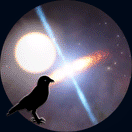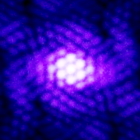|
Interstellar Addon 0.9.7.4 (Only tested with Patch 7)
|
|
| n0b0dy | Date: Wednesday, 20.07.2016, 19:25 | Message # 136 |
 Explorer
Group: Users
 Pirate
Pirate
Messages: 297
Status: Offline
| Why clouds at millers planet (haven't checked the other planets in gargantua system) are rendered at an extremely high altitude (~50km)?
I checked the catalogs\planets\interstellar.sc file and the two cloud layers for Miller's planet are set to ~7km and ~9km respectively but SE renders them almost outside the atmosphere.. 
|
| |
| |
| Spitfire7 | Date: Saturday, 23.07.2016, 22:05 | Message # 137 |
|
Astronaut
Group: Users
 United States
United States
Messages: 45
Status: Offline
| This might be because he later edited the water level. In the beginning the ocean was miles deep, but then he made it more realistic and lowered the ocean to a few feet deep like in the movie. This might be the reason for such a huge expanse from sea level.
|
| |
| |
| JackDole | Date: Sunday, 24.07.2016, 10:07 | Message # 138 |
 Star Engineer
Group: Local Moderators
 Germany
Germany
Messages: 1742
Status: Offline
| Quote Spitfire7 (  ) In regards to Gargantua, it would be cool to have it spinning. At real time 1x it doesn't move, but to make it similar to the movie I have to speed up time to about 1000x or so. I have seen some black holes at normal speed 1x still move rapidly. Is that possible to fix that?
My answer to this 'problem' may come a little late, but anyway ...
Possibly objects can not rotate faster than light in SpaceEngine!
The circumference of the accretion disk is about 3.13003731e10 Km = 29.00189061 light hours!
That is, when the disk is rotating at the speed of light, it needs in real time 29 hours for one rotation.
At a time acceleration of 300x, the disc would take about 6 minutes for one rotation.
Then you can already see a slight movement.
In other words: It is perfectly normal that the disk can not rotate faster! 
Quote DoctorOfSpace (  ) I think accretion rate should control the speed but modifying it changed nothing and no other variable in the editor seems to affect it.
I do not quite understand that, but I think the 'AccretionRate' is the amount of gas that is collected (from the surrounding space) and converted into energy by the disk. (In solar masses per year.) This affects the luminosity of the disk.
This is expressed very simplistic.
Don't forget to look here.

Edited by JackDole - Sunday, 24.07.2016, 11:23 |
| |
| |
| DoctorOfSpace | Date: Sunday, 24.07.2016, 13:11 | Message # 139 |
 Galaxy Architect
Group: Global Moderators
 Pirate
Pirate
Messages: 3600
Status: Offline
| JackDole, there are also other variables which affect the same thing if that is the case.
Intel Core i7-5820K 4.2GHz 6-Core Processor
G.Skill Ripjaws V Series 32GB (4 x 8GB) DDR4-2400 Memory
EVGA GTX 980 Ti SC 6GB
|
| |
| |
| Watsisname | Date: Sunday, 24.07.2016, 21:42 | Message # 140 |
 Galaxy Architect
Group: Global Moderators
 United States
United States
Messages: 2613
Status: Offline
| If the accretion rate is affecting the disk's rotational speed, I'm not sure why. It should just affect the disk's overall appearance and brightness. The rotational speed is given by the distance from the black hole and its mass. This is Kepler's 3rd Law (surprisingly this law does still work near black holes).

For a 100 million solar mass black hole, circular orbits at 6AU (3 times the event horizon radius, which is as close as they can be) have an orbital period (as seen from a far away observer) of about 13 hours, with a velocity of about 40% the speed of light. This is an angular velocity of 28° per minute hour, which is about as fast as the hour hand on a clock.
For the orbits to be faster, the black hole must be smaller. If we plug in the radius of the innermost stable circular orbit, the formula for orbital period at that radius becomes

This is about half a millisecond per solar mass.
These numbers will be very different in the frame of reference of the orbiting material (it's much faster), or for a spinning black hole (no spinning black holes in SE yet).

|
| |
| |
| Spitfire7 | Date: Sunday, 24.07.2016, 22:18 | Message # 141 |
|
Astronaut
Group: Users
 United States
United States
Messages: 45
Status: Offline
| Hey guys, I am glad we are talking about this. To make this most like the movie, we would need to make the black hole extremely violent and moving very rapidly. See video link I posted previously.
@Watsisname, yes there are spinning black holes in SE. I have actually seen a lot. Find a star cluster and go to the center of it. Make sure your time rate is at 1x and you will see some of these black holes are spinning very fast. This is not rare, in fact maybe I just got lucky, but maybe 3 out of 5 were spinning.
In fact, I just picked the first star cluster I could find and it was also moving. Granted it might be smaller, but keep looking, most of the black holes are spinning except Gargantua.
Most recent Start cluster coordinates. RC 5546-691 (M 88)
So I think we should make it spin. Like I said, see my video I linked to in a precious post. You can see in the film Gargantua is spinning and moving very violently. Would be cool to see this.
I am also working on fixing Mann's planet to make it look more like in the film. We currently have a good start, but mountains need to be slightly less spiky and there needs to only be white snow and dark grey rock. I am working on that, but if someone else wants to work on the spiky mountains let me know since I am not really sure how to do that.
|
| |
| |
| Watsisname | Date: Sunday, 24.07.2016, 22:40 | Message # 142 |
 Galaxy Architect
Group: Global Moderators
 United States
United States
Messages: 2613
Status: Offline
| Quote Spitfire7 (  ) @Watsisname, yes there are spinning black holes in SE. I have actually seen a lot. Find a star cluster and go to the center of it.
There are no spinning black holes in SE. What you see are non-spinning black holes with accretion disks. Spinning black holes have a different metric. 

|
| |
| |
| Spitfire7 | Date: Sunday, 24.07.2016, 23:12 | Message # 143 |
|
Astronaut
Group: Users
 United States
United States
Messages: 45
Status: Offline
| Quote Watsisname (  ) There are no spinning black holes in SE. What you see are non-spinning black holes with accretion disks. Spinning black holes have a different metric. smile
Ah no I see what you mean. I misunderstood. So then can someone make the accretion disks for Gargantua spin like in the movie?
|
| |
| |
| Watsisname | Date: Monday, 25.07.2016, 03:01 | Message # 144 |
 Galaxy Architect
Group: Global Moderators
 United States
United States
Messages: 2613
Status: Offline
| I'm not sure how without either increasing time acceleration or reducing the mass of the hole, neither of which are good solutions.

|
| |
| |
| Spitfire7 | Date: Monday, 25.07.2016, 04:36 | Message # 145 |
|
Astronaut
Group: Users
 United States
United States
Messages: 45
Status: Offline
| Quote Watsisname (  ) I'm not sure how without either increasing time acceleration or reducing the mass of the hole, neither of which are good solutions.
What would increasing the mass do? What are the side effects to that?
Also, here is what I wrote before and it includes the link to the clip.
"Lastly, if you watch the Gargantua scene when they get close at 1min 16 sec. into the video you can definitely see that the black hole itself is extremely violently moving very rapidly since this is more of a far away steady shot https://www.youtube.com/watch?v=YdSz12Glhlw. "
Edited by Spitfire7 - Monday, 25.07.2016, 04:38 |
| |
| |
| Watsisname | Date: Monday, 25.07.2016, 05:40 | Message # 146 |
 Galaxy Architect
Group: Global Moderators
 United States
United States
Messages: 2613
Status: Offline
| That would do the opposite of what you want -- make the accretion disk take longer to rotate.
I think you're still mixing black hole spin with accretion disk spin. They're different things. The accretion disk is material orbiting the black hole. It rotates regardless of whether the black hole spins or not. In exactly the same way as how planetary rings must rotate, even if the planet doesn't rotate at all. The bigger the black hole, the longer it takes for material to orbit it. Even though the material is orbiting very fast.
Black hole spin is a property of the space-time. It's like a whirling of the space itself. It changes a lot of things about the black hole -- it makes the event horizon smaller for a given mass, allows circular orbits to exist closer to the horizon, and forces nearby material to orbit in the same direction that the hole is spinning.
The black hole in interstellar is spinning, which is why we can't have a perfect reproduction of it in SE until the engine supports spinning black holes. But this is still pretty close to the correct appearance. The accretion disk does rotate. It's just not easy to notice at 1x time. 

|
| |
| |
| n0b0dy | Date: Monday, 25.07.2016, 06:10 | Message # 147 |
 Explorer
Group: Users
 Pirate
Pirate
Messages: 297
Status: Offline
| Quote Spitfire7 (  ) This might be because he later edited the water level. In the beginning the ocean was miles deep, but then he made it more realistic and lowered the ocean to a few feet deep like in the movie. This might be the reason for such a huge expanse from sea level.
That does not make any sense. The cloud height (AFAIK) is calculated from the land level. Not from the sea level.
The cloud height is calculated from water level (stupid me  ) but still it doesn't make any sense. The cloud height should have been lowered automatically since it refers to the water height - still I am perplexed ) but still it doesn't make any sense. The cloud height should have been lowered automatically since it refers to the water height - still I am perplexed 
Edited by n0b0dy - Monday, 25.07.2016, 06:14 |
| |
| |
| Spitfire7 | Date: Monday, 25.07.2016, 08:27 | Message # 148 |
|
Astronaut
Group: Users
 United States
United States
Messages: 45
Status: Offline
| @Watsisname: So there is absolutely no way currently to make the accretion rings appear to spin faster?
|
| |
| |
| Spitfire7 | Date: Monday, 25.07.2016, 08:51 | Message # 149 |
|
Astronaut
Group: Users
 United States
United States
Messages: 45
Status: Offline
| Quote DoctorOfSpace (  ) http://en.spaceengine.org/forum/17-376-1
An imported texture will be fairly low quality.
I will be flat out honest. I started reading how to import a texture and I got so confused and had to read it two more times. Maybe I am just tired, but I though this was going to be much easier than what it seems. So can someone who knows how to import a texture import this surface_diff file for Mann's planet? I made it mostly snow with grey and black rocky ground. I uploaded the file below.
Maybe you can take a pic and show me how it looks or send me the right files that I can just put in the file folder? To be honest I am not really sure how it works.
Thanks in advance if you can help.
|
| |
| |
| DoctorOfSpace | Date: Monday, 25.07.2016, 11:02 | Message # 150 |
 Galaxy Architect
Group: Global Moderators
 Pirate
Pirate
Messages: 3600
Status: Offline
| Spitfire7, I don't have the tools setup currently and I think it can be fixed in the catalog file instead. Using a texture will not look good.
Intel Core i7-5820K 4.2GHz 6-Core Processor
G.Skill Ripjaws V Series 32GB (4 x 8GB) DDR4-2400 Memory
EVGA GTX 980 Ti SC 6GB
|
| |
| |